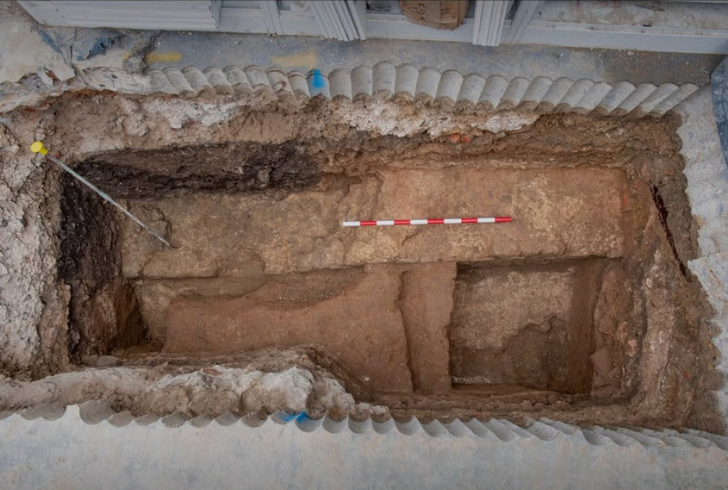Ancient Roman Basilica Ruins Discovered in London Construction Site
Archaeologists have uncovered the foundations of London’s earliest-known Roman basilica at a construction site on Gracechurch Street. The ruins, hidden beneath modern streets for nearly 2,000 years, were found during preliminary excavations for a new skyscraper.
This remarkable discovery provides a rare glimpse into the city’s ancient past and the early days of Londinium, the Roman settlement that evolved into present-day London.
A Glimpse into Roman London’s Heart

Instagram | carrieannegonzalez | Queen Boudicca led a fierce uprising in Londinium’s early days.
The excavation revealed flint, brick, and ragstone walls, some over three feet wide and stretching 13 feet deep. The structure dates back to 78–84 A.D., just decades after Roman troops seized control of the region. It was built shortly after the rebellion led by Celtic queen Boudicca. Archaeologists identified remnants of a two-story building, nearly the size of an Olympic swimming pool. The size and complexity of the ruins highlight the scale of early Roman construction.
Sophie Jackson from the Museum of London Archaeology described the find as one of the most important discoveries in the city’s historic core. She explained, “This discovery is extraordinary. It shows how quickly the Romans committed to developing London as a thriving settlement.”
The Forum: The Heart of Roman Life
The basilica was part of the Roman forum, the center of political, social, and commercial activity. This bustling area was where people traded goods, heard public announcements, sought justice, and participated in local governance. Researchers believe the newly uncovered section was part of the tribunal, a raised platform where officials made decisions that shaped the city’s future.
Andrew Henderson-Schwartz, head of public impact at the Museum of London Archaeology, emphasized the discovery’s significance. “These ruins connect us directly to London’s earliest days. They show that even in its infancy, Londinium was already a place of importance and growth,” he said.
Preserving History Alongside Progress
Hertshten Properties, the site’s developer, plans to incorporate the ancient ruins into the design of the new skyscraper. The remains will be preserved and displayed in a visitor center, giving the public a chance to experience this piece of Roman history up close.
The archaeological team continues to dig, hoping to uncover more about the basilica and the lives of Roman Londoners. Artifacts like writing tablets, styluses, and even discarded items could provide valuable insights into the daily life of people who lived in Londinium.
Unanswered Questions and Ongoing Discoveries
One lingering mystery is why the original forum was used for only 20 years before being replaced by a larger one. Researchers believe ongoing excavations may reveal clues. The larger forum remained active until Roman rule in Britain collapsed nearly three centuries later.

Instagram | theartnewspaper.official | This basilica adds to the growing collection of Roman landmarks shaping London today.
This discovery adds to the growing collection of Roman history scattered across London. Visible remnants of Londinium include sections of the old Roman wall, parts of an amphitheater, and the Mithraeum — a temple dedicated to the god Mithras, now preserved beneath a modern office building.
Connecting London’s Ancient History
Henderson-Schwartz noted that this discovery helps tie together many of London’s existing Roman sites. “It feels like we’ve found the central point that links these Roman remnants across the city,” he explained.
Elsewhere in England, archaeologists have found other fascinating Roman artifacts. These include a purple substance once more valuable than gold and a cache of coins dating back to Emperor Nero’s reign. Each discovery paints a vivid picture of life in Roman Britain and the empire’s lasting influence.
Bridging the Past and Present
The uncovered basilica is more than just a historical find. It offers a physical link to London’s ancient roots. Preserving and showcasing these ruins lets locals and visitors alike step back in time and witness the city’s transformation from a Roman settlement to a global metropolis.
As excavation continues, archaeologists remain hopeful that future findings will deepen our understanding of Roman London. Every artifact, structure, and uncovered detail adds another layer to the city’s rich history. Beneath London’s modern streets, the remnants of its ancient past continue to tell stories waiting to be discovered.